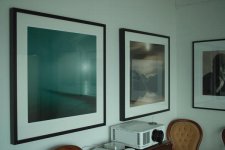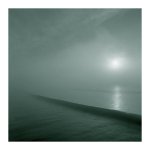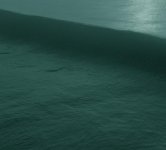Epson V700 vs Minolta Multi Pro
Epson V700 vs Minolta Multi Pro
Ok, finally got the time to post a few samples, all at 3200 dpi and no ICE, unless labeled otherwise.
Epson V700 with BetterScanning 120 holder + ANR Glass, Epson Scan
Minolta Multi Pro with Scanhancer, Vuescan.
Slide film, Velvia 100
Camera: Fuji GSW690 III, handheld.
Disclaimers:
1) The slide is a regular shot, no tripod, no critical focusing. (I will post a few deitals of some tripod test shots). So, some (probable) camera shake, some parts of image with less than stellar focus, some motion blur (leaves moving with wind). Real life, not optimized conditions.
2) Maybe using the Minolta Software the scans will be (even) better. If someone is kind enough to post a link to a version of Minolta software that runs on Lion, I would be happy to rescan and post.
3) I will be using links to my Dropbox, as attachments have to be so small that differences will probably be lost. If you can't see the files through the links, I will also post a link to the overall folder (files have descriptive names).
First, the overall image, so that you people can see the kind of cropping (enlargement) we are talking about. Scanned with the Epson, but at this resolution even with my old Coolpix 880 would be enough...
Scanned at 3200 dpi, no sharpening
Original size: 10459 x 6990 pixels
Resized in CS5 with Bicubic Sharper, no additional sharpening.
Auto Contrast (I usually scan with a bit of leeway both on highlights and shadows, overruling Epson Scan).
https://www.dropbox.com/sh/3gzlbnu822mhgjo/gTtuwkec6m#f:Epson Web.jpg
Next, a 732x837 pixel 100% crop to show some detail (try to find the cropping place. Hint: middle right):
Epson V700, no sharpening:
https://www.dropbox.com/sh/3gzlbnu822mhgjo/gTtuwkec6m#f:Epson Detail No Sharpen.jpg
Looks a bit fuzzy, especially when compared to the next one, from the Multi Pro, again with no sharpening:
https://www.dropbox.com/sh/3gzlbnu8...lti Pro No Scanhancer no Clean No Sharpen.jpg
Notice that the Multi Pro shows the grain in all it's glory (in fact, more than it should show but that is something I got used to with the Coolscan 4000ED). That's the price to pay for more "sharpness", at least without a drum scanner.
Using the Scanhancer does help with the grain:
https://www.dropbox.com/sh/3gzlbnu822mhgjo/gTtuwkec6m#f:Multi Pro no Clean no Sharpen.jpg
It also makes the scan look a lot like the Epson, with much lower local contrast.
So, it would seems that the Epson gets a beating...
Except that we can be really agressive with sharpening with the Epson:
https://www.dropbox.com/sh/3gzlbnu822mhgjo/gTtuwkec6m#f:Epson Detail Nik Sharpen.jpg
This was done using Nik Sharpener Pro plug-in with some tweaking, but using the Smart Sharpening tool from CS5 you get exactly the same results.
You don't even need to use CS5, the Epson Scan software does a good job sharpening:
https://www.dropbox.com/sh/3gzlbnu822mhgjo/gTtuwkec6m#f:Epson Detail High Sharpening.jpg
It enhances more the lower frequencies than the high frequencies. This means that prints will be good and pixelpeeping would be worse than it could be.
A simple Smart Sharpen filter of around 80% and 1 pixel on top of it gets it to the Nik Sharpener Pro territory:
https://www.dropbox.com/sh/3gzlbnu8...n Detail High Sharpening plus 80 rudius 1.jpg
If you compare the Epson + Nik version to the original Minolta scan, with no sharpening, probably you know will have a hard time telling the Minolta is better.
How about sharpening the Minolta? Well, you could...
But simply applying high frequency sharpening (the kind that makes small details pop on pixel level), grain will be too apparent, at least for me. And while sharpening on a lower frequency will indeed "show" more detail, that would happen anyway when sharpening (correctly) for printing...
Sincerely, I could get no better than what it was, without making grain to much apparent...
And with the Multi Pro and Scanhancer?
Well, it's much better than without Scanhancer:
https://www.dropbox.com/sh/3gzlbnu822mhgjo/gTtuwkec6m#f:Multi Pro no Clean Nik Sharpen.jpg
I can even see some pixelization, which may be an artifact of using Vuescan and not the Minolta software (or not...).
But is it heads-and-shoulders above the V700?
I dont' really think so: remember that this a really small crop out of a huge file, it would be like enlarging a 6x6.6mm crop from the negative at 3200 dpi, almost half a Minox frame!! (a Minox frame has 8x11mm).
If I repeated the whole process and resized to 2400 dpi before anything else (and I would still get a 5187 x 7729 pixel image: that's a lot...), I would say there would be no significant difference whatsoever even at pixel level.
Ok, but this is a handheld, quickly focused image. This means the details from the film will be less than with a tripod, optimal aperture, precise focus photo, right? And that would make the Multi Pro look better, because sharpening would reveal detail on the photo and not only random grain...
Well, that may be true (or not!) and that will be the subject of another post.
Here is the link to the Dropbox folder, if you can't follow the individual links:
https://www.dropbox.com/sh/3gzlbnu822mhgjo/gTtuwkec6m
Cheers!




